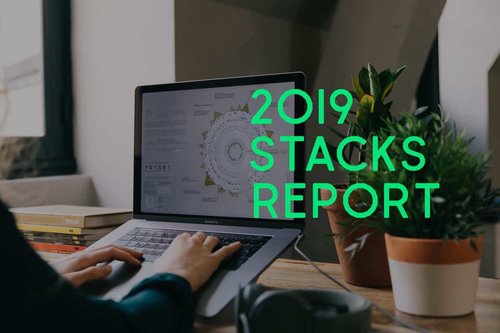How to Submit Successful Talk Proposals?
04. 4. 2019
5 min.


C# .NET developer @ CSN Energy
Do you have a project, framework or implementation detail you care so much about that you talk about it whenever given the opportunity? If your mid-Thursday meetings at work and family mealtimes are not enough, then it’s time to move to the next level by becoming a speaker at a well-known conference in your field! We’ll be giving you some advice in this article to ensure your topic ideas are accepted by the conference selection committees.
Find several topics
Before you start preparing the talk itself, take the time to make an exhaustive list of all topics you’d like to present. And that’s always good because it’s recommended to present several topics in order to maximize your chances of being selected!
Remember that human experience is just as important as technical knowledge in your chosen subject. While there are millions of people using Visual Studio, you might be the only one to have used it in specific conditions.
Short of inspiration? You can talk about an implementation detail of a coding around a concept, a project you’ve carried out, using tools to facilitate your daily work or a life experience that relates to the technical or human difficulties you’ve encountered, and the lessons learned.
Prioritize non-competitive topics
Be strategic by focusing on subjects which have little competition. Vincent Pradeilles, technical leader at Worldline and speaker at the conferences NSSpain and dotSwift, said that since “the most obvious technical subjects will be covered by renowned speakers,” you need to “prioritize less popular subjects where there is less competition, while choosing subjects that appeal to you and with which you feel comfortable.”
Less popular subjects still run the risk of being less interesting for the conference audience, so Pradeilles suggests “testing them out by writing a blog post, tweets, or open-source code before embarking on preparing a talk and applying for conferences.” You can then reuse this preparatory phase when you submit your topic as it will prove you have prepared your subject well.
Start preparing the content of your talk
The content of a talk and its submission are two different exercises, as explained by David Cheney, a conference organizer, speaker and contributor on the Go language, in his article How to write a successful conference proposal: “Your talk and the proposal to give that talk are different because they target different audiences. The former is what you are going to present on stage, the latter is a pitch to the reviewers to let you give that presentation.”
While it is important to keep this distinction in mind, you should start preparing the content of your talk before submitting your subject so that you can describe what you plan to present as clearly as possible.
According to Pradeilles, there are two main errors to avoid in this first step of preparing your content:
- Delving into an overly specific technical context with which the audience cannot identify. This means that the new information you present will be overwhelming, which will drown out the main ideas of your talk.
- Failing to address a specific problem. By providing a solution to a tangible and real problem, it will be easier for your audience to internalize the idea, concept or technique to apply it in their work.
Look out for calls for submissions
Responding to calls for submissions is often not the most enjoyable part of the process, but it is a vital one if you want to take the floor. Calls usually come out several months ahead of the conference date; it’s important to find out about them as soon as possible so as to have the most time to prepare your application. By being one of the first to submit a topic proposal, you’ll also be showing your motivation.
So, keep a close eye on networks like Twitter, communities of developers like GitHub or Slack, or newsletters and specialized websites. Some websites also reference conferences such as Cocoa Conferences, which targets iOS and macOS developers, or more general websites like confs.tech and Awesome Tech Conferences.
Write a relevant proposal
“A proposal must appeal to two audiences: obviously the audience of the conference, but also the selection committee,” reminds Pradeilles.
Conferences can see your proposal in different ways: via a form on their website, PaperCall or by email. You are usually asked for a conference title, summary, description, references and a brief biography. Even if the various sections of the application require a little extra work, your efforts will not go wasted, since the title, abstract or short bio will often be displayed word for word on the conference website.
Here’s another small reminder which seems obvious, but is forgotten by around 30% of applicants, based on the experience of Karolina Szczur who has been on the selection committee of many conferences: Before you start applying, make sure you’ve read the rules. The instructions might specify a required language, accepted topics, submission dates and maximum number of words.
The title and summary require special attention as they have to use compelling wording to generate interest. Keep in mind that the writing style must be adapted to the conference audience. The best way to get it right is to watch talks and read texts from previous conferences.
The description is for you to outline the content of your talk. Be precise, clear and comprehensive. Don’t settle for a fast overview. Your goal is to assure the selection committee that you are a worthy candidate and that your topic will meet the expectations of the conference.
Submission forms may also give you the option to include your credentials. If this is not the case, try to find a subtle way to do this in the description by adding links to:
- External content which is directly related to the talk. For example, a blog post or code that shows the committee why you are valid speaker on this subject.
- Videos of previous talks where you are speaking the required language of the conference. This will demonstrate that you are comfortable speaking in that language in public.
- Your professional networks such as LinkedIn, GitHub or Twitter. This will show that you are active in the community.
Lastly, use your bio text to reinforce that are a worthy applicant for this talk. This is an opportunity to highlight your years of past experience working on issues related to the topic.
Stay motivated
It can take up to a year between the initial intention to participate in a conference and the big day itself. So, arm yourself with plenty of courage and motivation and, above all, don’t get discouraged!
We recommended practicing regularly in front of an audience, be it at a local meet-up or a company presentation to boost your confidence. You should also follow the news conferences that interest you and regularly watch talks to keep you focused.
Lastly, keep in mind that one conference can receive hundreds of proposals for just a few dozen spots. A refusal does not mean you had a bad topic. It may simply have been given to a more experienced speaker.
What can you do now?
- Take five minutes of your time to note down five projects or experiences that you are passionate about.
- Choose one of the topics you’ve written down. Talk with others and make a first draft of an article to structure your ideas.
- Make a list of the conferences that you find interesting and watch the videos of previous editions to identify the target audience.
This article is part of Behind the Code, the media for developers, by developers. Discover more articles and videos by visiting Behind the Code!
Want to contribute? Get published!
Follow us on Twitter to stay tuned!
Illustration by Brice Marchal

Viac inšpirácie: Career hacking
Because being a developer is not just about coding, we want to share dedicated tips on soft skills and career paths, help you stay up-to-date with your favorite technologies, and learn more about the job market.

Computing’s Gender Divide: Why Tech Is Stuck in the 1980s
Discover why the percentage of women who held computing-based jobs has been in a steady decline since the 1980s.
14. 9. 2020

5 Remote-work Lessons From the Open-source Community
The open-source movement has a few things it can share about remote working with the wider software-development community.
09. 6. 2020

2019 Stacks Report
The most-mentioned technologies in the job specifications published on WTTJ's website in 2019 and the average number of applicants per technology.
21. 4. 2020

Engineering Management: An Interview with Saad Rehmani
Saad Rehmani, the VP of Engineering at Reddit, shares his most effective management strategies to handle the COVID-19 crisis.
07. 4. 2020

Engineering Management: An Interview with Rich Archbold
Rich Archbold, the VP of Engineering at Intercom, explains how to develop a management style and how to transition to managing other managers.
17. 3. 2020
Novinky, ktoré to vyriešia
Chcete držať krok s najnovšími článkami? Dvakrát týždenne môžete do svojej poštovej schránky dostávať zaujímavé príbehy, ponuky na práce a ďalšie tipy.

Hľadáte svoju ďalšiu pracovnú príležitosť?
Viac ako 200 000 kandidátov našlo prácu s Welcome to the Jungle
Preskúmať pracovné miesta